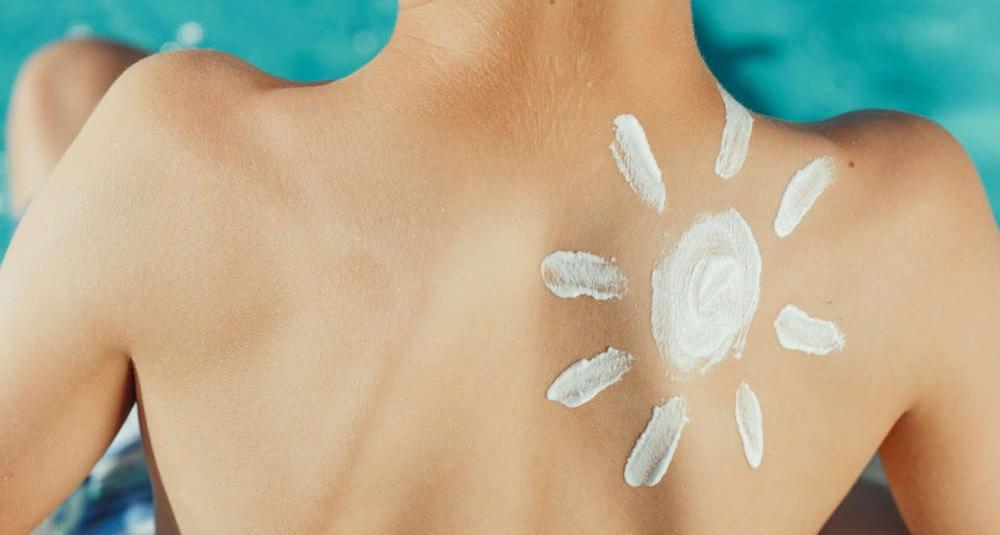The Safest, Least Harmful Sunscreens for Your Skin This Summer
From our Friends at Westchester Magazine:
With summer here, local experts give us the low-down on which sunscreen brands and ingredients to look for before you hit the beach.
JUNE 25, 2024 |BY DAVE ZUCKER

Westchester recommendations are objective, unbiased, and curated by the editorial team. If you buy something through our links, we may earn an affiliate commission at no cost to you.
Sunscreen, an intrinsic part of the summer experience, has spent a lot of time in the news cycle of late, and unfortunately not for good reasons. (Perhaps you’ve seen the anti-sunscreen movement on TikTok?)
Research has shown several common active ingredients in chemical sunscreens — avobenzone, escamsule, octocrylene, and oxybenzone — can be absorbed through the skin and enter the bloodstream, concerningly at levels that far exceed the U.S. Food and Drug Administration’s recommended maximums.
While the study strongly recommends further testing to determine if any of these chemicals can have harmful long-term effects in such dosages, consumers have been sent into a panic to find acceptable replacements for their go-to sunscreens.
We checked in with several local experts, including a respected dermatologist with his own line of natural skincare products and the owner and founder of a hyped local beauty boutique, to get a better idea of what we should be looking for. First, though, let’s get into the two major types of sunscreen and why users are now looking to go old-school.
The Two Types of Sunscreen
When it comes to catching rays without getting burned, there are two types of sunscreen: chemical and mineral. Both can be measured in terms of SPF — Sun Protection Factor — the measure of protection against UVB rays, which tan and burn our skin. (UVA, meanwhile, are the “aging” rays, which can cause trouble down the line, but are not included when considering SPF protection.)
As Time points out, SPF 15 blocks about 93% of UVB rays, SPF 30 about 97%, and SPF 50 about 98%. So no, you really don’t need to pay extra for that tube of SPF 100
Mineral sunscreens involve applying a layer of actual mineral material — usually zinc oxide or titanium dioxide in a cream — that deflects the sun’s rays to prevent a burn. (Think the old white-nosed lifeguards, but don’t worry: the formulas have come a long way since.)
These sunscreens leave a matte finish that blocks full-spectrum UVA (“aging rays”) and UVB tanning/burning rays, but can tend to feel heavy and block sweat, making more intense physical activity problematic.
Chemical sunscreens, meanwhile, can feel much lighter and come in both creams and sprays. They use several chemical compounds, including those listed above, to block out a portion of UVA and/or UVB rays. These can be preferable for heavy activity, but they should be applied at least 30 minutes before direct sun exposure.
Importantly, none are as effective in blocking both UVA and UVB rays as zinc oxide. Still, for their convenience and unobtrusiveness, chemical sunscreens have been predominant in the market. The above-mentioned study, however, has consumers looking back to mineral-based products.
So Why Are These Chemicals Bad All of a Sudden?
“Sunscreen active ingredients such as oxybenzone, avobenzone, octocrylene, and, in one sunscreen, ecamsule, have been shown to exceed the FDA’s recommended level of plasma concentrations,” says Bruce Robinson, MD, cosmetic and medical dermatologist and creator of JAS, Just Amazing Skincare.
“It is not known fully if there are any hazardous repercussions of these concentrations,” he adds. “Therefore, the FDA has called for further studies to assess with accuracy the implications.”
More recently on social media, a number of TikTok users have been sharing commentary surrounding the chemicals in sunscreen. Notably, many of these claims lack the scientific evidence to support them.
What Common Sunscreens Contain These Chemicals?
The four chemicals avobenzone, escamsule, octocrylene, and oxybenzone are present in pretty much every common sunscreen you can think of off the top of your head: many Neutrogena formulations, Coppertone, Bull Frog, Banana Boat, La Roche-Posay, Blue Lizard. All of these common brands contain one of these potentially questionable ingredients as the primary active ingredient.
So What Are Some Safer Options?
“Serious skincare means a lot more than protection for the beach,” says Diana Rainsford, owner and founder of POSH Beauty Boutique in Bronxville. “Sunscreen is an everyday commitment. It does not have to be greasy or heavy to achieve maximum results.”
The boutique is big on effective, results-driven treatments and, in selecting a good sunscreen, it is just as thoughtful. “MDSolarSciences gets a big thumbs-up from me,” Rainsford says. “A natural, mineral-based, broad-spectrum protective sunscreen, it has an incredible matte finish. It is oil-free, non-whitening, and water-resistant for 80 minutes.”
What’s the ingredients list packed with? “[It is] full of antioxidants,” Rainsford explains. “Vitamin C, green tea, cranberry fruit, and pomegranate extracts to name but a few! Titanium (2%) and zinc oxide (17%) are the key ingredients in this beautiful formulation.”
How do dermatologists feel about chemical-based sunscreens?
“Best to avoid them all and stay with a mineral-based sunscreen containing zinc oxide,” Robinson says. “That provides safe, broad-range protection against ultraviolet light and scatters and deflects the sun’s rays away from the skin. I have recommended EltaMD Sunscreen for years and carry it in my office.”
Nicola A. Quatrano, MD, of Westchester Dermatology and Mohs Surgery recommends Neutrogena’s Sheer Zinc formula (zinc oxide-based) “which you can find in any CVS,” and Supergoop Mineral Mattescreen (zinc oxide/titanium dioxide blend), which is a bit pricier but offers a much more visually appealing finish than many other mineral sunscreens. Blue Lizard‘s mineral-based formulations, she adds, are also safe and great for both kids and the environment.
“I try to always offer a range of options for different patients,” she says.
Chappaqua-based dermatologist Lydia M. Evans, MD, agrees that MDSolarSciences and EltaMD are “excellent choices” for mineral sunscreens. In addition, “both La Roche-Posay and CeraVe have come out with SPF 50 mineral sunscreens which are also very good and might be more readily available in the marketplace,” says Evans.
Well, I Have Sensitive Skin. Am I Just Out of Luck?
Thankfully, no.
“A lot of people who think they’re allergic to sunscreen — or have reported sunscreen allergies — it’s actually the preservatives and artificial chemicals they’re reacting to,” Quatrano says, recommending Vanicream as an excellent zinc-titanium formula that’s not too heavy feeling and can be found at Walgreens.
For those who tend to develop acne with sunscreen use, Evans recommends EltaMD UV Clear. “In my experience, UV Clear does not make people break out, so it’s an excellent mineral-based sunscreen for anyone with this tendency,” she says.
Patients should, of course, consult their dermatologist if they have any concerns. Evans notes, however, that many mineral-based sunscreens can be tolerated more easily than their chemical-reliant counterparts.
Additionally, there’s plenty you can do to minimize sun exposure that doesn’t rely on constantly lotioning up.
“Sunscreen should not be considered in a vacuum,” Robinson advises. “It’s helpful to have a sun-safe strategy. This includes wearing a hat with a four-inch brim, UVA/UVB protective sunglasses, sun-protective clothing, avoiding the sun if possible between the hours of 10 a.m. and 3 p.m., and getting a complete skin exam from your dermatologist once a year. Sunscreen, plus a summer sun plan, will protect the skin most effectively, and an annual visit to a dermatologist will catch any abnormalities early, which is so important.”
Shop These Sunscreens
Ready to pick your perfect sunscreen? Here are top picks recommended by local dermatologists and skincare experts.
- Blue Lizard Sensitive Mineral Sunscreen – with Smart Bottle Technology so bottle changes color in harmful UV light
- CeraVe Hydrating Mineral Sunscreen – affordable, with a lightweight, nongreasy feel
- EltaMD Broad-Spectrum Sunscreen – formulated with zinc oxide, free of fragrance and parabens
- EltaMD UV Clear Collection – good for sensitive skin
- La Roche-Posay Anthelios Sunscreen – SPF 50 and ideal for face application
- MDSolarSciences Mineral Sunscreen – broad-spectrum mineral SPF with pure zinc oxide
- Neutrogena Sheer Zinc Face Mineral Sunscreen – affordable, with a high SPF
- Supergoop Mineral Mattescreen – applies well under makeup
- Vanicream Sunscreen – good for sensitive skin
Products mentioned above are all available through doctors, retailers, and skincare shops both locally and online. For more information on summer sun protection, visit CDC.gov.


